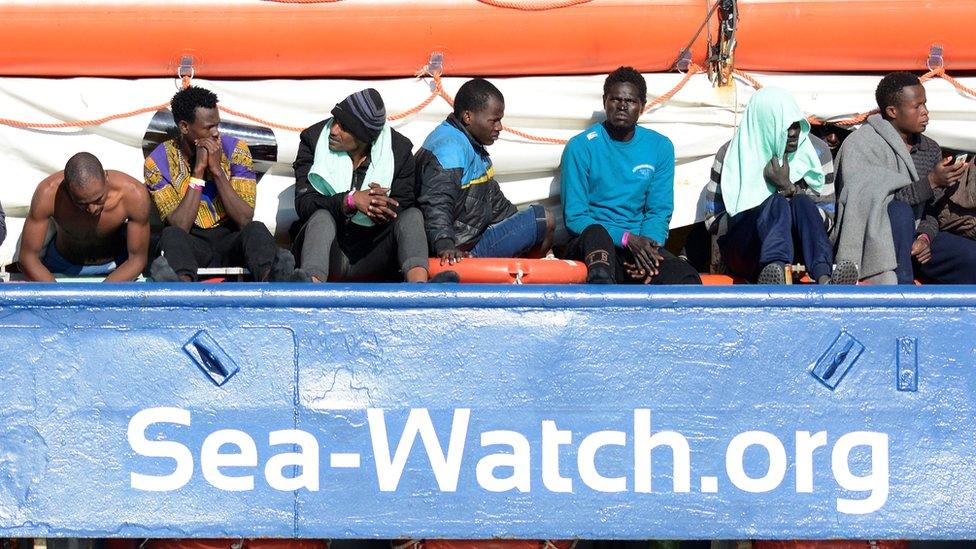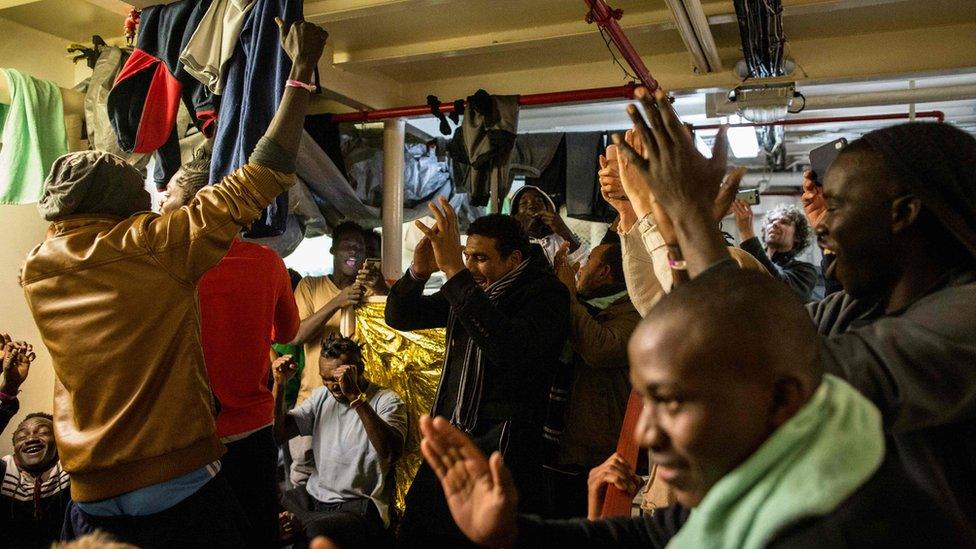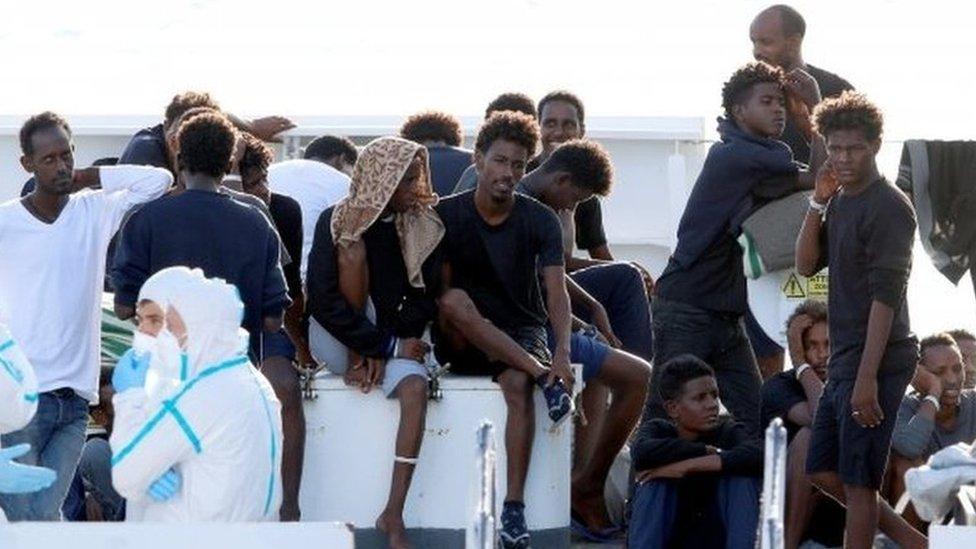Migrant crisis: UN says six die every day in Mediterranean crossings
- Published

Some of the passengers aboard the Sea Watch 3 wait off the coast of Sicily on Sunday
An average of six migrants died crossing the Mediterranean every day last year, a UN report says.
Italy had earlier highlighted the lower overall number of deaths last year, due to fewer people making the crossing.
But the rate of deaths from Libya rose to one for every 14 arrivals in 2018 – from one in 38 the year before.
The report came as seven European countries agreed to end a row over 47 rescued migrants, stranded on a humanitarian boat for 12 days.
Sea Watch, a German humanitarian organisation, had taken Italy to the European Court of Human Rights after it pulled the migrants from the Mediterranean near Libya on 19 January.
Italy's populist government, which has taken a hardline stance on migrant boats, refused to allow the boat Sea-Watch 3 to dock, so it remained moored off Sicily.
On Wednesday, Italian PM Giuseppe Conte said the 47 migrants would be allowed to disembark after "a list of friendly countries", including Italy, agreed to take them in.
Why is the death rate higher?
Italy's Interior Minister Matteo Salvini has been vocal about his country's opposition to immigration, which was a key part of his election campaign.
In a letter published in Italian newspaper Corriere Della Sera (in Italian),, external published on Tuesday, he wrote: "In 2018 there were fewer deaths, 23,370 landings compared to 119,369 the previous year. The trend is also confirmed by the first few weeks of 2019."
But the latest report from the UN refugee agency (UNHCR) highlighted the higher rate of deaths among those who did make the journey, pointing to the difficulties faces by humanitarian rescue groups as the cause.
"Although the overall number of deaths at sea in the Central Mediterranean more than halved in 2018 compared to the previous year, the rate of deaths per number of people attempting the journey rose sharply," it said.

On 9 January, a different group of migrants celebrate the news that they will be allowed to disembark
"It is likely that reductions to search and rescue capacity coupled with an uncoordinated and unpredictable response to disembarkation led to an increased death rate," the report said.
An estimated 2,275 people died making the journey in 2018 - an average of more than six every day.
The death toll was particularly high on the route to Spain, where it was more than four times the 2017 figure.
What do migrants face in Libya?
The report said that Italy's refusal to accept migrants rescued off the Libyan coast coincided with reduced search and rescue operations from European ships - and there had been a rise in "interceptions" by the Libyan Coast Guard instead.
But the report said those people were then transferred to detention centres, where they faced "appalling" conditions.
"Detainees in some facilities were given limited access to food, while there were also reports of an outbreak of tuberculosis," it said.
For those who were rescued by European ships, it criticised the lack of a coordinated response on their fate.
"On several occasions, large numbers of often traumatised and sick people were kept at sea for days before permission to disembark was granted," it said.
It recommended that search and rescue operations be stepped up - but also that "solidarity" among European nations should allow relocation of asylum seekers to other EU nations, to ease the burden on those dealing with "a disproportionate number of asylum claims".
- Published24 September 2018

- Published11 September 2018

- Published20 September 2018

- Published26 February 2020
